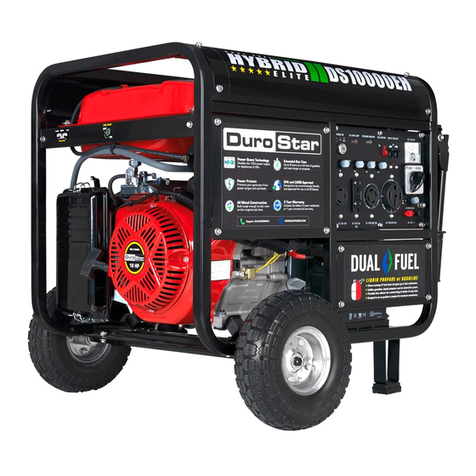4
Table of Contents
Important Pre-Operation Information and Safety Tips......................................2
Series Appearance Diagram............................................................................5
1. Main Technical Specifications and Operation Circumstances..............6
1.1 Main Technical Specifications....................................................................6
1.2 Operation Circumstance ............................................................................7
2 Installation of Generator Set......................................................................8
3 Preparation for Starting..............................................................................9
3.1 Diesel Fuel, Air Cleaner Element, and Lube Oil.........................................9
3.2 Inspection for Diesel Generator Set.........................................................11
3.3 Bleed Air from the Fuel Line.....................................................................11
3.4 Before Starting, Operation must be done.................................................11
4 Start Generator Set...................................................................................11
4.1 Recoil Start ..............................................................................................11
4.2 Electric Start.............................................................................................14
4.3 Battery .....................................................................................................14
5 Operation for Generator Start..................................................................15
5.1 Operation of Diesel Engine......................................................................15
5.2 Generator Operating Speed.....................................................................15
5.3 Exercising the Generator Set...................................................................15
5.4 Open the Machine Case Door..................................................................16
6 Load Application.......................................................................................16
6.1 Determine Total Load Connected to the Generator Set...........................16
6.2 Start Electric Motors.................................................................................17
6.3 Extension Wire.........................................................................................18
6.5 AC Application .........................................................................................18
6.5 DC Application.........................................................................................18
6.6 Treat Machine with Double Voltage Output .............................................19
7 Stop the Generator Set.............................................................................19
8 Maintenance..............................................................................................20
8.1 Periodic Maintenance ..............................................................................20
8.2 Maintenance for Long Time Storage........................................................22
9 Inspection, Repair and Troubleshooting ................................................22
9.1 Doubtful Points and Problems..................................................................22
9.2 Inspection, Repair and Trouble Shooting.................................................22
Appendixes:
List for comments from users





























